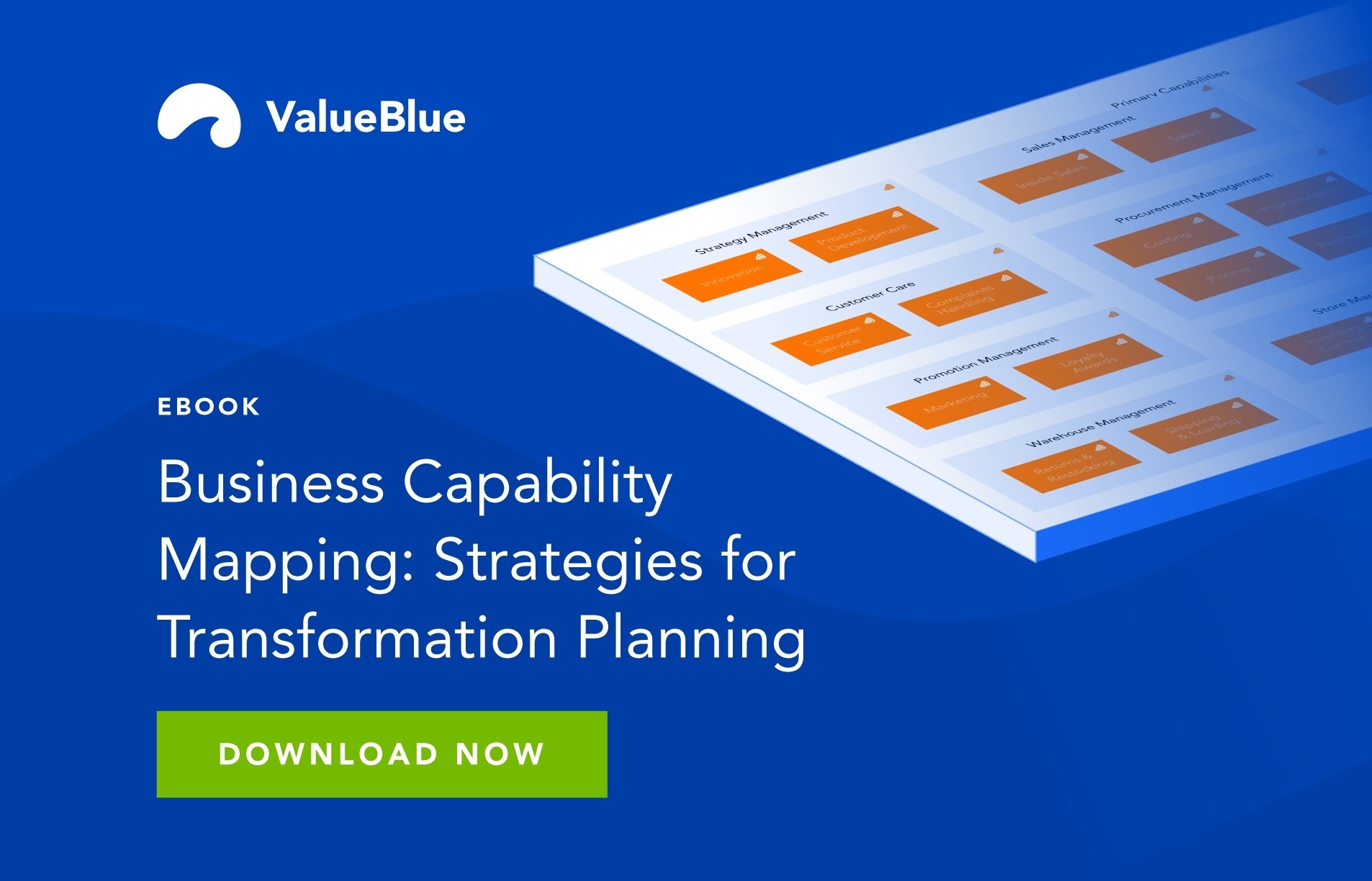The Role of AI in Enterprise Architecture: A Future Outlook
In today's fast-evolving market landscapes, Enterprise Architecture (EA) plays a pivotal role in a company’s efforts to adapt and innovate. By making strategic use of business data, Enterprise Architects align operations and technology with business strategy — thus designing the blueprint for innovation and change. However, as companies expand and their structures grow more complex, the data becomes vast and far more challenging to analyze and communicate with the wider organization. This is where artificial intelligence (AI) comes in.
With its ability to run complex analyses and convert data into digestible information, AI provides critical insights and output at an accuracy and speed that traditional human analysis cannot match. As such, it has the potential to introduce a fundamental change in how enterprise architects tackle their everyday tasks and roles within their organizations.
In particular, AI promises to enhance the following architecture capabilities:
- Modeling: Information can be modeled easily to build well-structured solution designs
- Data Clarity: Complex data can be distilled into straightforward insights that are easy to understand for all stakeholders.
- Data Quality: Decisions can be rooted in high-quality, up-to-date data.
- Reporting: Data can be quickly transformed into structured reports and scenarios that allow for effective decision-making.
In this blog post, we take a closer look at each capability and examine the effects of AI in Enterprise Architecture practices.
1. Modeling
When building solution designs or modeling architecture diagrams, both architects and non-architects may be prone to making mistakes or not identifying the most optimal way to build their diagrams. With AI, the quality of solution architecture can significantly improve, as an AI assistant can help architects create designs in a more precise and error-free way.
Onboarding on new tools and technologies
With continuous advancements in technology, Enterprise Architects have access to new and improved tools for various tasks, including creating architecture diagrams and building solution models. By using an AI assistant, they can more easily navigate and adopt these new technologies. At the same time, AI assistants can help onboard non-architects, allowing for more collaboration and accessibility of architecture data with the wider organization.
Filling gaps in architecture diagrams
When architects design models or diagrams, they’re building a knowledge base of data that needs to be of a high enough quality for accurate insights and representation. This includes recording attributes of and relationships between objects, which are not always maintained or recorded. By analyzing existing patterns, machine learning algorithms can automatically fill in missing attributes with no need for manual work. On the other hand, generative AI can propose new ideas or patterns, allowing for potential enhancements to the architecture models.
Recommendations for new solution designs
When creating new solution designs from scratch, architects may want to refer to models that already exist in a platform. However, replicating patterns or full designs can sometimes be challenging or time-consuming. Generative AI can accelerate this process by recommending patterns for new designs based on the existing data.
Identifying inconsistencies and policy violations
One of the biggest challenges in solution architecture is mapping solution designs to the applicable policies, principles, and guidelines. AI can detect violations of pre-defined rules and suggest where to administer the same ones.
Scenario design and comparison
Finally, when designing potential solutions for transformation projects, architects may want to present multiple scenarios to key stakeholders and compare their respective impacts. An AI assistant could make impact analyses, compare scenarios, and suggest improvements based on vast amounts of data. By leveraging those insights, generative AI can even produce alternative designs or models.
-1.png?width=896&height=232&name=MicrosoftTeams-image%20(116)-1.png)
2. Data Clarity
One of the long-standing challenges for enterprise architects is aligning IT teams with business or other key stakeholders. This includes presenting models or architecture diagrams to colleagues with less technical backgrounds. AI allows for the so-called “translation” of data into more recognizable or digestible concepts.
Simplifying technical concepts
With the use of natural processing language (NLP) techniques, AI can analyze and understand the semantics of human language. This means that an AI chatbot can understand and answer questions in simplified or everyday jargon. For example, both architects and non-architects can ask the chatbot questions about objects, attributes, or relationships in the architecture, or even ask the bot to create those relationships.
3. Data Quality
Apart from building solution models or designs, architects must maintain an up-to-date overview of their current state — including process, application, data, and technology landscapes. However, as landscapes become more complex, these tasks take up an increasing amount of time. Architects may spend hours designing the architecture, maintaining attributes and fact sheets for objects, and transferring data between systems.
There are several ways in which AI can help in managing the current state:
Image and pattern recognition for structuring data
Oftentimes, architects store or import information from different platforms, which can result in unstructured or differently formatted data. In certain cases, they might even have to structure data that comes in unconventional shapes or sketches. By using image or pattern recognition technology, the information can be reconstructed into interpretable formats, such as applications, processes, or data structures.
Recommendations for improvements in the current state
Over time, organizations will usually revise and optimize the requirements for their architecture components. By referring to the new internal requirements or data from external sources — like industry best practices, other organizations, or analyst data — AI can create benchmarks and generate recommendations for improvement.
4. Reporting
Lastly, Enterprise Architects must analyze the data at hand to derive insights and offer strategic advice to the organization. However, given the amount of time spent on maintaining information, the latter is often too low on the to-do list. This is where Generative AI can help.
Data visualization and reports
Generative AI can synthesize information from various data sources to create anything from visualizations to comprehensive reports. It can not only visualize trends, patterns, or models but also structure and write sections of reports, such as executive summaries or data interpretations.
Generating insights
By analyzing patterns and trends in the enterprise data, generative AI can surface insights that might not be immediately apparent to human analysts, such as hidden dependencies in the IT infrastructure or potential areas for cost savings.
AI-powered Enterprise Architecture
Although AI is not intended to replace the strategic thinking, knowledge, or creativity of Enterprise Architects, it will soon become an indispensable resource and partner in their everyday work. With its abilities to structure, analyze, and generate data, AI will not only help EAs perform their tasks more efficiently and accurately, but it will open up the Enterprise Architecture practice to a whole new audience.
With the help of AI, the barrier to active participation in the architecture process is reduced for non-EA roles like Product Managers and Owners, Project Managers, Business Analysts, Engineers, Scrum Masters, and many more. This will play a major role in bridging many of the gaps that exist today between EAs and other stakeholders across the organization. Ultimately, AI will significantly increase the impact that Enterprise Architecture can have on the actual transformation process.
At the same time, Enterprise Architecture tools will continue to advance and ultimately offer a range of AI-driven features. Regardless of which tools they have at their disposal, Enterprise Architects are almost certain to move towards an AI-powered future.
Do you want to follow updates on AI and other feature updates in BlueDolphin? Subscribe to our newsletter below or follow us on LinkedIn.

.png)


